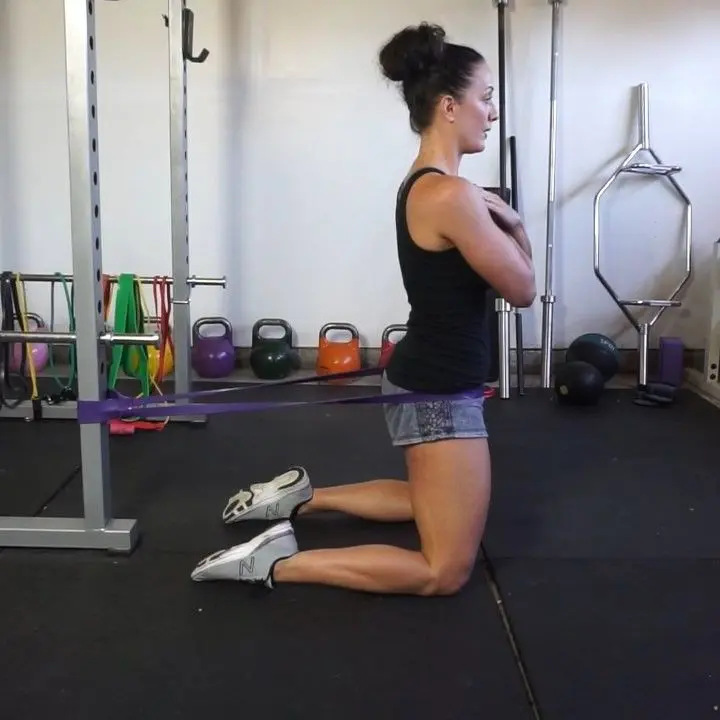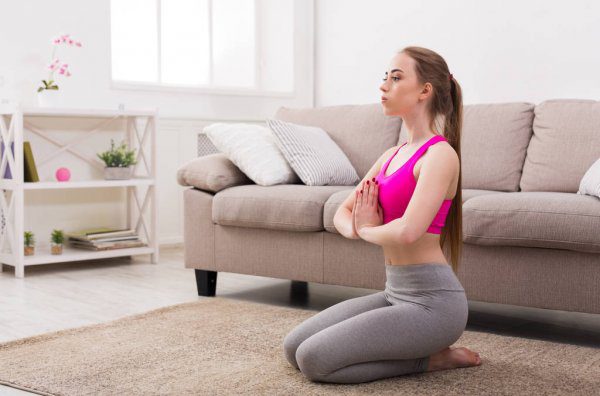
The best online fitness resource you'll ever need. We filter out the BS to ensure you meet your health and fitness goals!

The best online fitness resource you'll ever need. We filter out the BS to ensure you meet your health and fitness goals!

It may sound counterintuitive to have a kneeling squat. Surely a squat, by its very nature, has you bending at the knees, bringing your hips downwards. How does this work when you start from kneeling? What does it even mean?
Well, it means quite a lot, actually. The kneeling squat is a fantastic assistance exercise that you can include on your leg or squat days, giving the muscles of the lower body – particularly those involved in hip-thrusting motions – a decent pump.
It does what it says on the tin, too. You will be performing a squat from a kneeling position, daft as this sounds.
Let’s have a quick look at how it works and how you might want to use it.
As above, the kneeling squat is a squat from a kneeling position – so far, so obvious.
There is a little more to it, however. Essentially, it is a lower body movement performed on your knees that is perfect for isolating in part the muscles engaged during hip thrusting. This broadly means the portion of your posterior chain between your knees and lower back – we’ll go into detail on the exact musculature involved below.
Training your hip thrust is very important. It is key in straightening up again at the top of a conventional squat. It is key in straightening up out of a deadlift. In fact, any time you bring your torso upwards, straightening up, you are using your hip thrust capabilities – your hamstrings tighten, your butt flexes, your lower back pulleys you upwards.
Kneeling squats work perfectly. If you struggle to come back up out of either your squat or deadlift, have poor posture, especially through your lower back, or struggle with hip control and power output, they may well be worth bringing into your regular routine.

Engagement is key with the kneeling squat. As with all exercises, simply running through the motions isn’t good enough. Doing so with kneeling squats will particularly undermine what you’re going for. You aren’t simply trying to flop around with them – you should be actively engaging and tightening your hamstrings, increasing mind-muscle connection to them as much as stimulating them for growth, and really clenching through your glutes to bring your hips forwards with strength and control.
Kneeling squats are, unsurprisingly, performed on your knees. You may want to fold a yoga mat or something similar beneath them for comfort, especially if you have particularly sensitive (or knobbly!) knees.
From here, kneel, and simply do the following:

There are a few things to bear in mind when performing kneeling squats. These can help to keep you safe throughout each movement and should maximize the benefits you gain from performing them.
If you want to add a further element and really bring your posterior chain into the movement, lean forwards from the hips as you come down into the squat. The lean should be subtle, and should never come from the lower back. Straighten up as you come up, mindfully flexing your hamstrings as you do so. This should work them in conjunction with your lower back.
Keep your torso upright throughout, unless actively trying to engage your posterior chain. Your spine should be neutral, and your scapulae pulled back and downwards, your collarbone open and broad. Maintain a neutral gaze forwards.
Again, unless going for more posterior chain engagement, keep your hips in line with your knees. Remain mindful – go slow and light.
This exercise is far more about mind-muscle connection than simply pounding out reps. With this in mind, make sure to really squeeze your glutes as you come forwards with each rep, brace your core, and avoid any lateral movement or sideways leaning in the torso.
Doing all of this should mean that you are getting what you want out of your kneeling squats, with no nasty surprises along the way!
The main muscular benefits to be gained from performing kneeling squats are in the glutes. However, as I’ll go through below, these are minimal. There are far better exercises out there for building big, strong glutes – if you rely on kneeling squats for them then you will be waiting a very long time!
For me, as I’ve mentioned, mindfulness and mind-muscle connection are everything with kneeling squats.
It’s common for people to have far more strength potential in their legs and posterior chain at any given level of muscle mass. They simply aren’t using it – the clue is in the name: it is ‘potential’.
It doesn’t matter how much mass you have, how many contractile fibers your muscles have if you’re not contracting them properly because your neuromuscular system doesn’t have the right capabilities and pathways to be able to do so.
In this case, though building more muscle will be beneficial, there are some very immediate strength gains to be made by improving the mind-muscle connection. Simply learning to isolate and switch on the weighty mass in your glutes and hamstrings will lead to greater full-body strength and athleticism.
As with many squat and deadlift assistance exercises, the downsides are in what kneeling squats leave out. You really have to finagle your body to bring the posterior chain into the movement. There is minimal core engagement and almost no quad engagement.
Squats and deadlifts themselves should be your main go-to exercises for lower body strength and mass.
There are a couple of grossly limiting factors that will stop you from being able to bring full stimulation into the muscles you are using, too.
Firstly, knee pressure means you can’t go too heavy. With the most robust knees and the most supportive of yoga mats, you still won’t be able to put too much pressure into your kneeling squats. Your kneecaps simply cannot take it – it will be uncomfortable and dangerous to try.
The direction of force is also against you. The glutes tighten and push forwards. The main resistance – gravity – is pulling downwards. This means that they aren’t working fully against resistance. This is true in lots of hip flexion, so it’s fair enough, but there are better exercises for isolating and working the glutes for strength and mass.
Pairing conventional squats or leg presses with weighted hip thrusts, for example, maybe more beneficial in building strength and mass.
Kneeling squats have their place, but they shouldn’t be staples in your workouts. You won’t be able to progressively overload them much – the lack of stimulation gives them a low natural plateau. Nor will you ever really build that much muscle with them.
We’ve already gone through most of these, but it’s still worth running through the muscles used in more detail.
Obviously, your glutes and posterior chain will be the prime movers in kneeling squats. This means the Glute Maximus, Glute Medius, and Glute Minimus, alongside the hamstrings, abdominals, and adductor Magnus. A small amount of work will also go into the quadriceps in the front of your thighs.